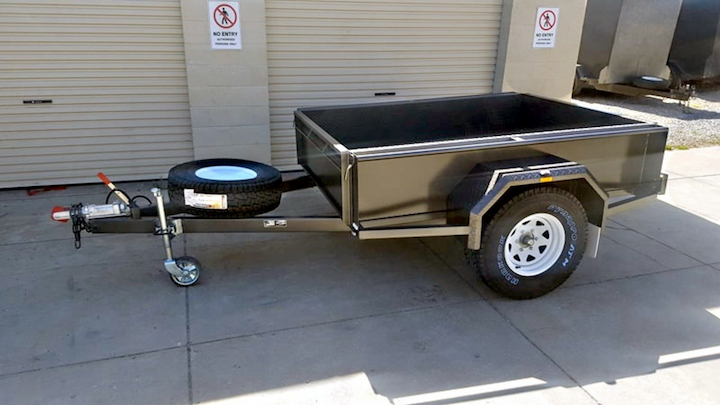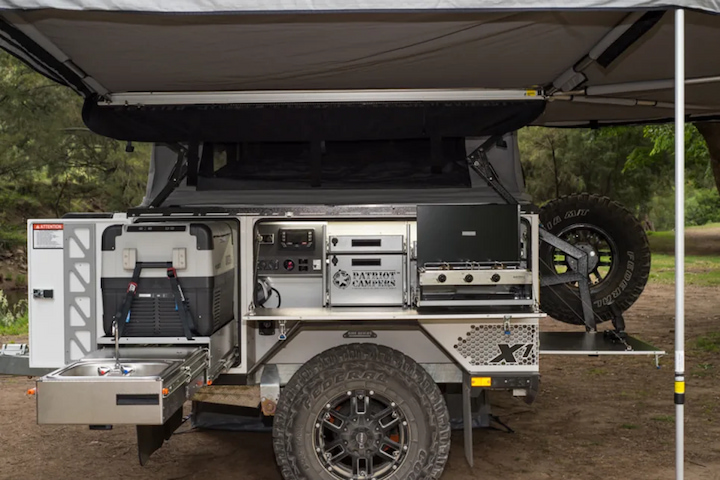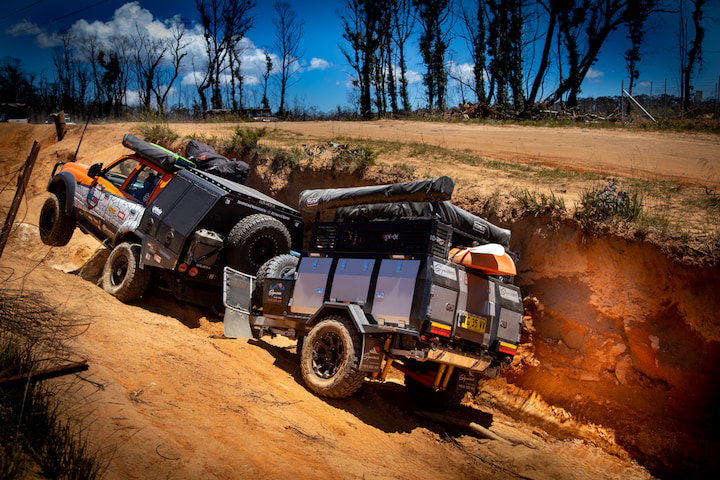The Different Types of Off-Road Trailers
Not all news gravitating around the new normal called Covid-19 has to be grim. Aussies have ditched their passports in favour of exploring their own country. Small forgotten coastal towns are now seeing record numbers of visitors, and the more adventurous amongst us are going inland, for short overnight stays or month-long trips traversing places that don’t even feature on maps. Local tourism is growing exponentially, meaning opportunities for many.
If you’re new to the bandwagon that is off-roading, there are a few basics to consider. The first is the vehicle, the second your gear, and lastly the journey. You can have a fully decked-out RV or campervan, but these are only suited for good, sealed roads. To get a taste of Australia’s innards, you’ll need a capable 4WD pulling an off-road trailer. Trailers will pack all your gear, and provide for the basic living luxuries away from home. What isn’t a given though, is where you’ll be going. And this is where the fun starts.

Source: satrailers.com.au
Off-Road Trailers – The Basics
Trailers come in all shapes and sizes, from small single axle trailers around the family farm to huge truck trailers hauling all types of goods. Those that are suited for off-roading tend to differ from their road cousins in a few important ways. The first is the build quality. Since they’ll be taking a beating, off-road trailers need to be made tough. Most have fully galvanised welded steel chassis with tougher, longer drawbars so they can be hurled around.
Alternatively, smaller lightweight models will be made of reinforced aluminium. Tow points can be found both on the front and back of the trailer for easy maneuvering. To accommodate going over boulders, branches and through water, they have higher ground clearance, better approach and departure angles. This is aided by larger wheels, sitting on oversized off-road specific tyres resistant to puncture. Tyre treads bite into any type of soil, but won’t leave you bogged down. Wheels run through strengthened off-road axles supporting beefy independent suspension that smoothens out any bumps in uneven ground.
And lastly, to avoid tipping over, or from being dislodged from the towing vehicle, off-road trailers do away with simple ball and hook connections, and have dedicated articulating hitches, meaning they’re stable in all situations. An off-road trailer equipped will go anywhere you tow it, and remain unscathed.
Key Differences Between On and Off-Road Trailers
Trailers intended to be used exclusively on tarmac have lower ground clearance, which helps with overall height for urban settings and reduces drag at higher speeds. However, being lower and set on standard road tyres, they’ll struggle through terrain with larger rocks or branches. Chassis on on-road trailers are built of sturdy metal, though not to the standard of their off-road cousins. Hitches and connections also won’t need to bear extreme angles, so they are mainly the ball and hook type.

Source: carsguide.com.au
Types of Off-Road Trailers
To soothe your craving for adventuring off the beaten track, trailer makers offer off-road trailers in two basic configurations – pop-up trailers and teardrop drop trailers. Both types will have living space for at least two adults, a small kitchen with all the essentials, and separate dining space or dinette. They differ in their design, and how they are built.
Pop-up Trailers
Pop-up trailers have square or rectangular designs, depending on length, and pop-up living space. Tents and extensions can come out either at one or both ends, so they belie the space they provide when not set up. Some tents will pop upwards, and will suit those comfortable sitting and sleeping a bit higher off the ground.
More expensive models are better equipped, both in terms of features and materials. Tents can range from cheap canvas to synthetic mixtures that will keep you protected from the elements. Kitchen bays are the slide-out style and feature gas-powered or electric cooktops and functional sinks. Portable fridges are powered by 12V sockets.
For the sake of durability, kitchens are quality stainless steel with lockable rails and stands for support. Living quarters should fit a decent-sized double bed with sitting space on larger trailers. On the exterior, there are storage spaces to fit things like gas canisters, fire extinguishers, water tanks, spare tyres and basic camping tools. Awning rails feature on most models, and extend at either side.
Pop-up trailers are easy to set up. And they’re quickly packed up if you’re in a hurry. They’re the closest thing to the typical camping experience without going overboard in luxury. Smaller, basic pop-up trailers for two adults are relatively cheap. If you want more space, extra goodies and a setup suited to extreme terrain expect to pay considerably more.
Teardrop Trailers
Teardrop trailers are making a comeback since they first appeared in the US in the 1930s. They have a design resembling a teardrop which aids aerodynamics when on tarmac. Like pop-up trailers they’re small and lightweight, but consist of an enclosed shell that doesn’t expand. Outer casings are mainly of aluminium or galvanized steel and will stand up to rain or wind better than a pop-up trailer. The living and sleeping quarters are up front, and the kitchen at the back. Storage compartments are littered throughout. Though they don’t offer as much usable space as pop-up off-road trailers, they’re fine for short trips for two people at the most.
Expedition Trailers
Expedition trailers can be either larger versions of pop-up and teardrop trailers or trailers verging on full-sized caravans. The ‘expedition’ in the name refers to the sturdy off-road setup, meaning they can be towed in any off-road settings compared to the typical caravan. Larger models, running a tandem axle, are capable of sleeping four adults and feature full-sized kitchens, living rooms and bathrooms. Even washing machines are seen in some models. For additional sitting, and sleeping space, there are trailers with pop tops. Expedition trailers or caravans are suited for longer family trips in the bush. They are enough sturdy to stand any type of weather and offer the utmost in terms of comfort and space. This makes them some of the most expensive off-road trailers you can buy.

Source: signaturecampertrailers.com.au
What to Look for in Off-road Trailers
All off-road trailers are built to handle the toughest roads or trails. When buying consider how much space you need and the number of people you need to accommodate. Consider also the length of your trip and whether your choice of trailer is adequate to provide an outdoor experience you’ll want to remember. Comfort plays a big part here and brands offer many optional features, that ultimately raise prices. And lastly set your budget. You can go for a used or new trailer if you intend to go on regular off-road trips, or you can rent out a trailer for a one-off adventure in the bush.
